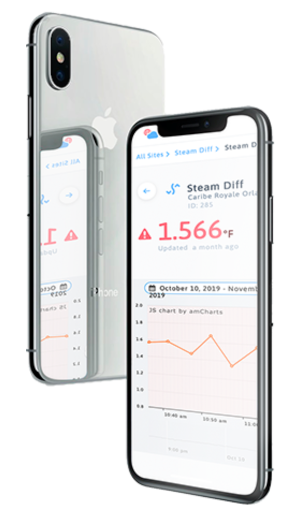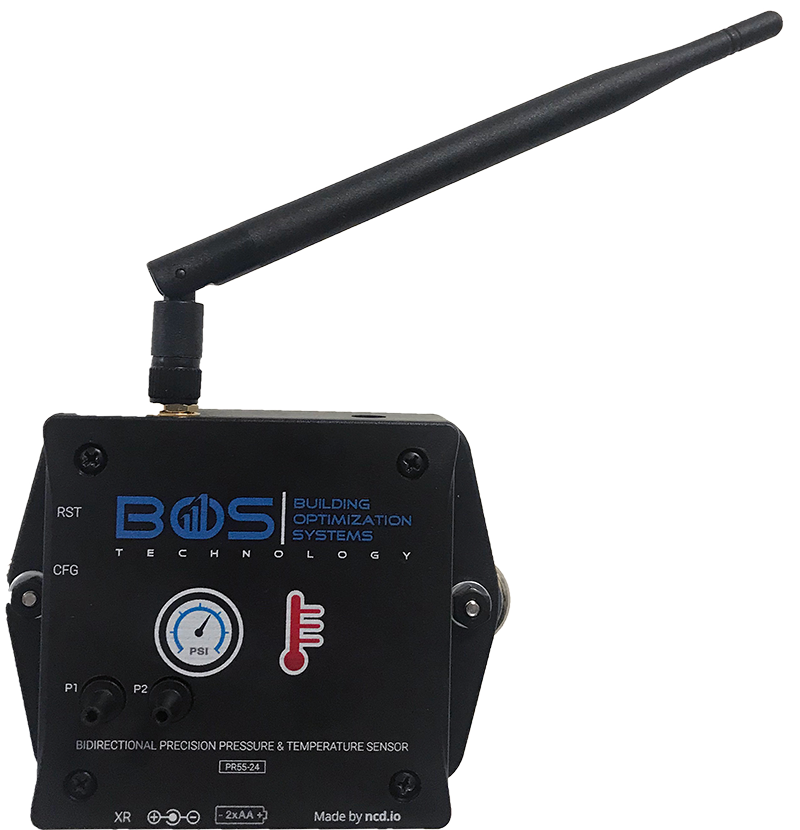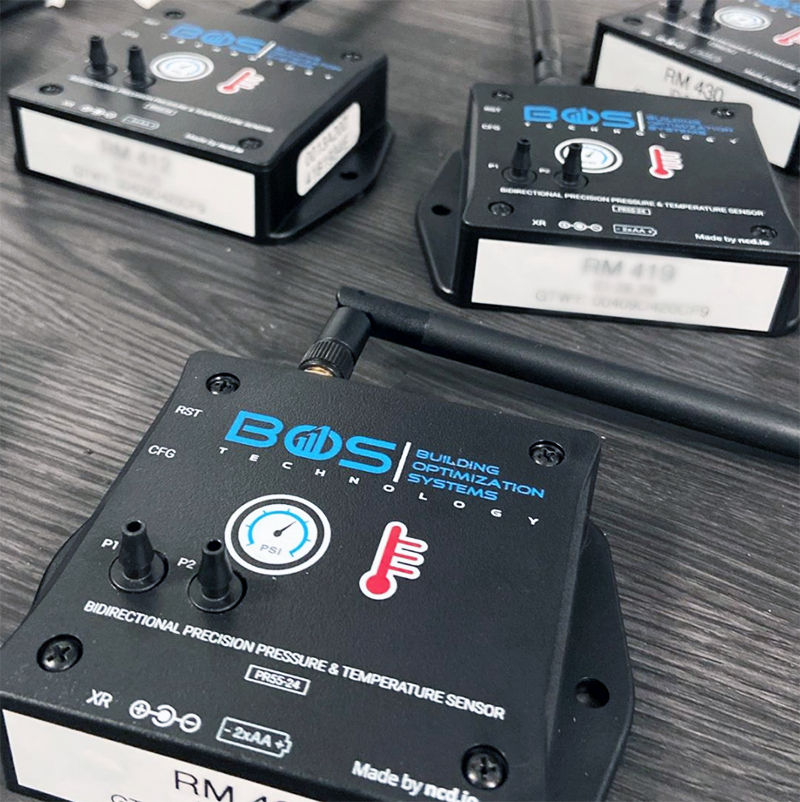BOS Technology builds solutions that enable facilities managers to monitor their critical environments in real time. The company maintains a strong presence in healthcare, as well in schools/colleges, travel/tourism, commercial real estate, and other sectors. By installing sensors in critical areas, BOS Technology collects and delivers key data on environmental elements such as temperature, humidity, tVOC (volatile organic compounds), ACPH (air changes per hour), differential pressure, and more.
Adapting Technology to Fight the Pandemic
Since its founding in 2017, BOS Technologies’ innovative solutions have helped companies remotely monitor differential pressure for construction sites at hospitals and healthcare systems to prevent dust and particles from infiltrating patient-occupied areas. As Billy Stewart, chief operating officer, explained, “You don't want drywall dust or other airborne contaminants shifting from the construction site to, for instance, a pulmonary ward where patient care could be adversely affected.”
As Billy Stewart, chief operating officer, explained, “You don't want drywall dust or other airborne contaminants shifting from the construction site to, for instance, a pulmonary ward where patient care could be adversely affected.”
In those applications, BOS Technology's sensor-based system monitors in real time. The supply of air and the exhaust of air through the HVAC and related building infrastructure to ensure proper air quality, pressure, temperature, humidity and other factors. The data gets delivered to the laptop, smartphone, or tablet of a facility director or building engineer, who can also receive text/email alerts and take appropriate action if variances/tolerances are exceeded.
Responding to the COVID-19 Pandemic
“In healthcare settings, construction teams must maintain negative pressure to trap unhealthy particles,” said John Lepak, chief executive officer of BOS Technology. “As the coronavirus pandemic started to spread rapidly, we realized that this technology would also work well in clinical settings. “Frankly, our device – the Differential Pressure Transmitter – is ideal for coronavirus patient rooms because it’s based on the same ideas and goals. In this case, you’re trying to trap pathogens using negative air pressure to prevent the spread of the virus into the hallway and beyond.”

One of the keys to the Differential Pressure Transmitter lies in its ability to sidestep the need to send data through the hospital’s internal network. “Hospitals are rightfully careful about what applications, services, and data they allow on their networks,” said Stewart. “But given the time-critical nature of the need to respond to the pandemic, they need a solution very quickly. With our Differential Pressure Transmitter, we can install in minutes, and the data travels from the patient room to Digi Remote Manager®, via a Digi ConnectPort® X2 gateway to a BOS Technology server that handles the aggregated data. There, the data is compiled and delivered to customers. The server can also issue alerts.”
Digi ConnectPort X2 is a small Digi XBee®-to-Ethernet gateway that provides low-cost IP connections for RF devices and sensor networks. Featuring an easy development environment, ConnectPort X2 enables custom applications to run locally while interfacing across existing Ethernet networks for WAN connectivity to the Internet. Digi ConnectPort X2 also features an end-to-end development environment based on local customization via Python.
Relief for Clinicians
“Digi ConnectPort X2 is a perfect choice for our application,” Stewart said. “We wanted to use only the very best products for this solution – chips, sensors, and gateway. Our research showed that Digi XBee and Zigbee offered the best networking approach. We reviewed several vendors, and only Digi provided the right answer for us. We use one ConnectPort X2 unit per floor – maybe with a repeater or two. We get excellent coverage with the 900MHz signal, too.”
With hospitals scrambling to convert traditional patient rooms into isolation rooms, BOS Technology has rapidly installed its solution on the doors to hundreds of converted patient rooms in nine hospitals throughout Central Florida. That’s enabling hospitals to check every sensor for every COVID-19 room, simply by using a phone or a tablet – in real time.
That’s enabling hospitals to check every sensor for every COVID-19 room, simply by using a phone or a tablet – in real time.
“Hospitals are heavily regulated when it comes to monitoring air pressures – from ORs to isolation rooms, even linen closets,” said Lepak. “When our solution is installed, hospitals know that no infectious disease has left the room. And for clinicians, that comes as a real relief. They’re happy knowing that their healthcare facility cares about protecting them while they work on the front lines to care for very sick patients.”
As the pandemic continues to strain the limits of the healthcare system, many institutions are creating “pop-up” clinics and tent hospitals to handle the overflow. “Even though these are temporary facilities, the dangers are just as great,” said Stewart. “They will need the same negative air pressures, so our device will meet that increased demand very well.”